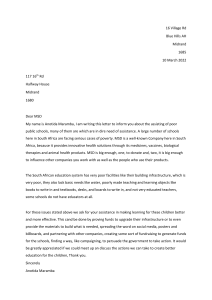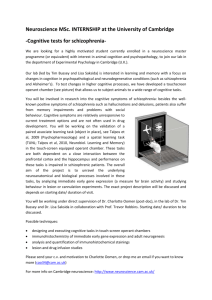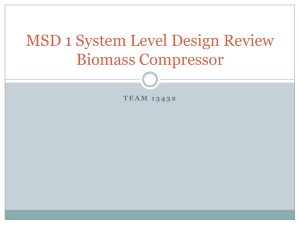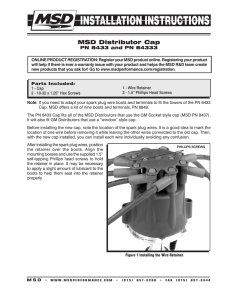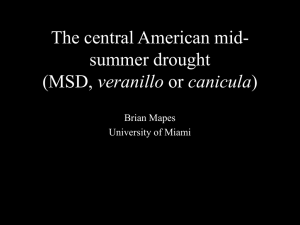Social Cognitive Theory
advertisement
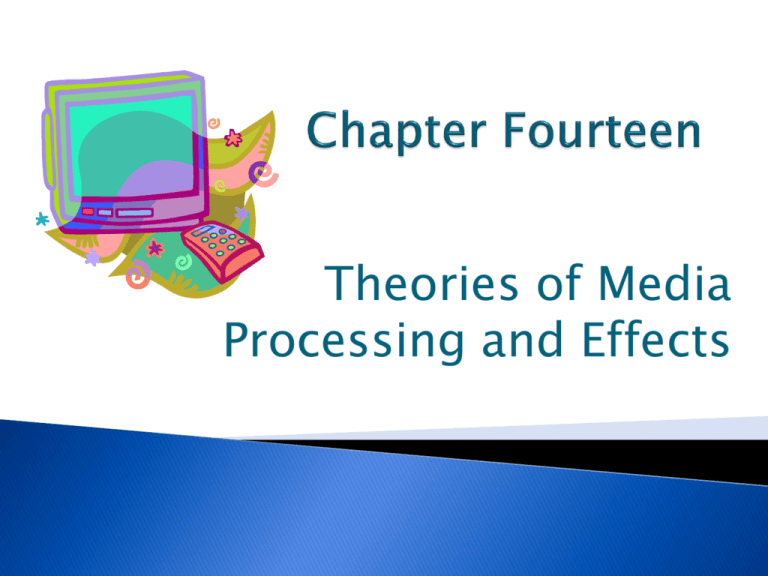
Theories of Media Processing and Effects History of mass communication can be recounted through introduction of various technologies “Age of mass communication” ushered in in 19th and 20th centuries Study of mass communication began in earnest in 1920s and 1930s Strong effects models: 1920s1930s ◦ “magic bullet model” ◦ “hypodermic needle model” Society as undifferentiated and isolated individuals (S—R) Limited effects models: influences that come between the stimulus (media) and the response (S—O—R) ◦ Individual differences ◦ Social categories and subcultures ◦ Social relationships Social cognitive theory is a theory of learning proposed as contrast to operant conditioning models Operant conditioning models-individuals learn through direct reward and punishment Social learning theory proposes that learning can also occur through observation (modeling) ◦ Renamed Social Cognitive Theory in 1970-80’s by Bandura Observational learning: ◦ Modeling or imitation ◦ Inhibitory effect: Seeing a model punished for a particular behavior ◦ Disinhibitory effect: Seeing a model rewarded for a particular behavior Vicarious reinforcement effects influenced by: Outcome expectations: Belief that we will receive the same rewards/punishments as observed model Outcome expectancies: The positive or negative value placed on outcome expectations Identification with the model Self-efficacy: An observer’s ability to perform a task and his/her confidence in that ability In considering mass media, Social Cognitive Theory suggests that the most important models in today’s world are found in media sources Study of media violence and children Application to design of health communication campaigns Medium Newspaper Genre News Reason Information More directly considers role of active audience Basic goal is to understand needs of audience and how those needs are gratified through media choice One typology of gratifications sought and obtained: ◦ Information needs ◦ Personal identity needs ◦ Integration and social interaction needs ◦ Entertainment needs NEED TYPE DESCRIPTION Cognitive (thought) Acquiring info, knowledge, comprehension Affective (emotion) Emotional, pleasant, aesthetic credibility, confidence, status Connections w/ family, friends Escape, diversion Personal Integrative Social Integrative Tension release MEDIA EXAMPLE How does audience activity facilitate media contact and effects? Selectivity: Individuals selectively expose themselves to particular media Attention: Individuals allocate particular attention to media content Involvement: Individuals are “caught up” in media content (parasocial interaction) Psychological and social influences on gratification seeking Critique that U&G work has been fragmented and has not led to coherent theoretical statements Critique that U&G approach is too narrow and individualistic Promise for understanding use of new media systems At the heart of MSD is a “tripartite system” of components that depend on each other for valued resources ◦ Societal systems ◦ Media Systems ◦ Audiences All three of these also influence effects of the media http://www.tcw.utwente.nl/theorieenoverzicht/Theory%20clusters/Mass%20Medi a/Dependency%20Theory.doc/ http://www.tcw.utwente.nl/theorieenoverzicht/Theory%20clusters/Mass%20Medi a/Dependency%20Theory.doc/ Dependencies at micro, meso, and macro levels (Fig. 14.2, p. 261) MSD proposes that individuals are not always powerful actors (choice + CE!) MSD proposes times at which dependency relationships are heightened ◦ Times of societal conflict and change Common sense/own experience (but not “Everybody’s different” fallacy!) Standards for type of theory (Note: These are not the standards for evaluating research!) Purpose of theory Other theories Studies that you find on the theory Reviews of the theory and research
